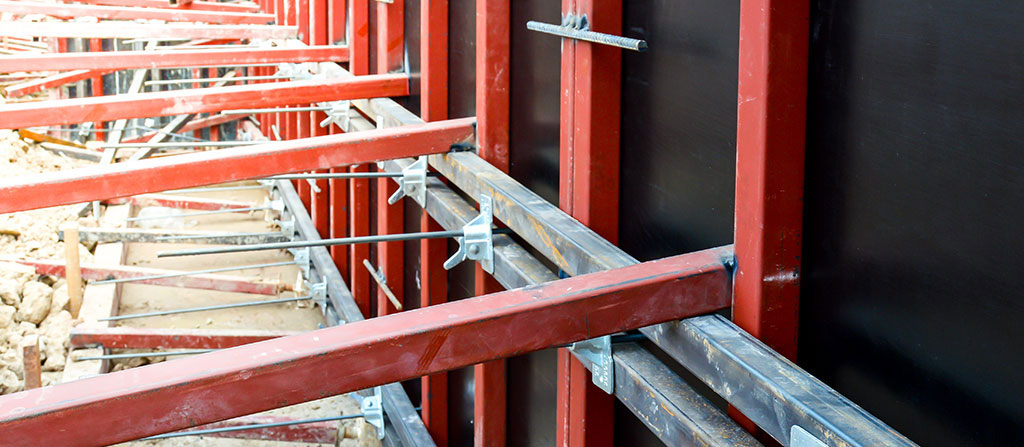What are the implications of incorrect formwork installation?
Formwork installation is a critical phase in the construction of concrete structures, where precision and adherence to design specifications are paramount. Incorrect installation of formwork can lead to a cascade of negative consequences, affecting not only the immediate phase of construction but also the long-term integrity and safety of the structure. Understanding these implications is crucial for construction professionals to mitigate risks effectively.

1. Compromised Structural Integrity
One of the most severe implications of incorrect formwork installation is the potential compromise to the structural integrity of the concrete element being cast. If formwork is not aligned or supported correctly, it can result in uneven thickness, improper curing, or even collapse during the concrete pour, leading to weaknesses in the finished structure that may not be immediately apparent.
2. Safety Hazards
Incorrectly installed formwork poses significant safety risks on the construction site. The potential for formwork collapse under the weight of wet concrete can endanger workers, leading to injuries or fatalities. Additionally, improperly secured formwork components can fall, creating hazards for individuals working below.
3. Increased Costs
The need to rectify mistakes due to incorrect formwork installation can lead to increased material and labor costs. In cases where the concrete has already been poured, rectification may involve demolition and reconstruction, significantly driving up project expenses. Additionally, delays in project timelines while issues are addressed can result in further financial penalties.
4. Project Delays
Incorrect formwork installation often results in construction delays. Time must be allocated to identify the issues, develop a rectification plan, and execute the necessary corrections. These delays can have a domino effect on the project timeline, affecting subsequent phases of construction and potentially leading to missed deadlines and contractual penalties.
5. Aesthetic Deficiencies
Formwork directly influences the surface finish and aesthetic appeal of concrete structures. Incorrect installation can lead to surface imperfections, such as honeycombing, voids, or uneven textures, which may not meet the architectural specifications of the project. Addressing these aesthetic issues can require additional finishing work, adding to the project's cost and duration.
6. Legal and Compliance Issues
Failure to adhere to building codes and standards due to incorrect formwork installation can result in legal and compliance issues. This may lead to project stoppages, fines, and the need for costly compliance measures to rectify the situation, further impacting project timelines and budgets.
One of the most severe implications of incorrect formwork installation is the potential compromise to the structural integrity of the concrete element being cast. If formwork is not aligned or supported correctly, it can result in uneven thickness, improper curing, or even collapse during the concrete pour, leading to weaknesses in the finished structure that may not be immediately apparent.
2. Safety Hazards
Incorrectly installed formwork poses significant safety risks on the construction site. The potential for formwork collapse under the weight of wet concrete can endanger workers, leading to injuries or fatalities. Additionally, improperly secured formwork components can fall, creating hazards for individuals working below.
3. Increased Costs
The need to rectify mistakes due to incorrect formwork installation can lead to increased material and labor costs. In cases where the concrete has already been poured, rectification may involve demolition and reconstruction, significantly driving up project expenses. Additionally, delays in project timelines while issues are addressed can result in further financial penalties.
4. Project Delays
Incorrect formwork installation often results in construction delays. Time must be allocated to identify the issues, develop a rectification plan, and execute the necessary corrections. These delays can have a domino effect on the project timeline, affecting subsequent phases of construction and potentially leading to missed deadlines and contractual penalties.
5. Aesthetic Deficiencies
Formwork directly influences the surface finish and aesthetic appeal of concrete structures. Incorrect installation can lead to surface imperfections, such as honeycombing, voids, or uneven textures, which may not meet the architectural specifications of the project. Addressing these aesthetic issues can require additional finishing work, adding to the project's cost and duration.
6. Legal and Compliance Issues
Failure to adhere to building codes and standards due to incorrect formwork installation can result in legal and compliance issues. This may lead to project stoppages, fines, and the need for costly compliance measures to rectify the situation, further impacting project timelines and budgets.
Mitigating the Risks
To avoid the implications of incorrect formwork installation, it is essential to:
- Invest in Training: Ensure all workers involved in formwork installation are adequately trained and understand the importance of following design specifications precisely.
- Conduct Regular Inspections: Implement a rigorous inspection process at various stages of formwork installation to identify and correct any issues promptly.
- Collaborate Closely: Foster close collaboration between design teams, construction managers, and formwork technicians to ensure clarity in formwork plans and specifications.
Conclusion: Prioritizing Precision in Formwork Installation
The implications of incorrect formwork installation underscore the importance of precision, planning, and oversight in the construction process. By recognizing the potential risks and implementing strategies to mitigate them, construction professionals can ensure the safety, integrity, and success of their projects.
